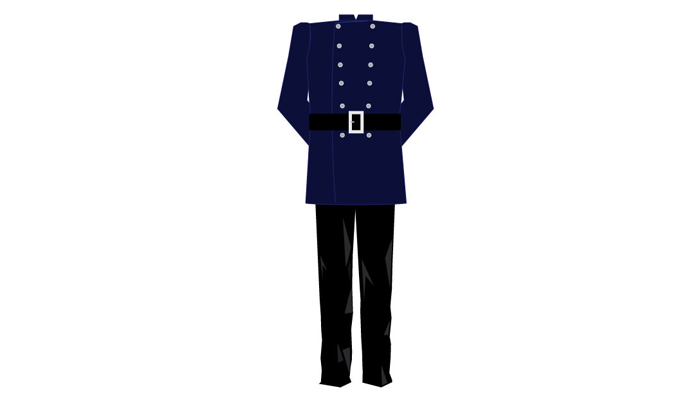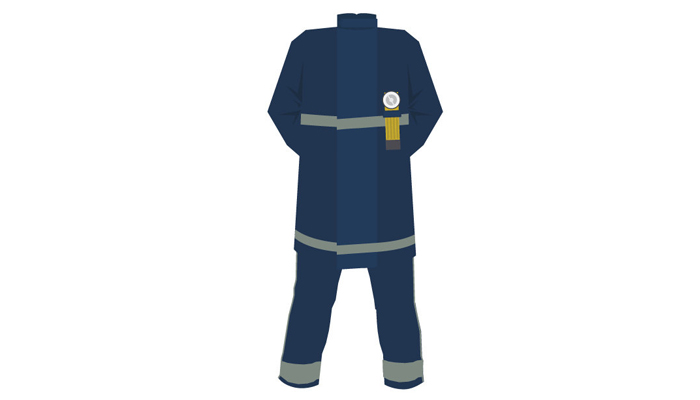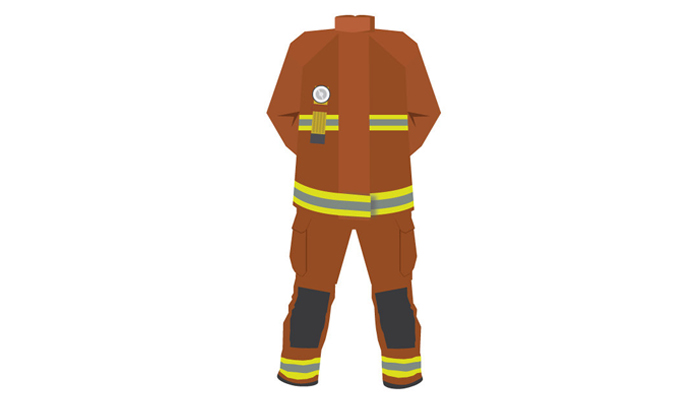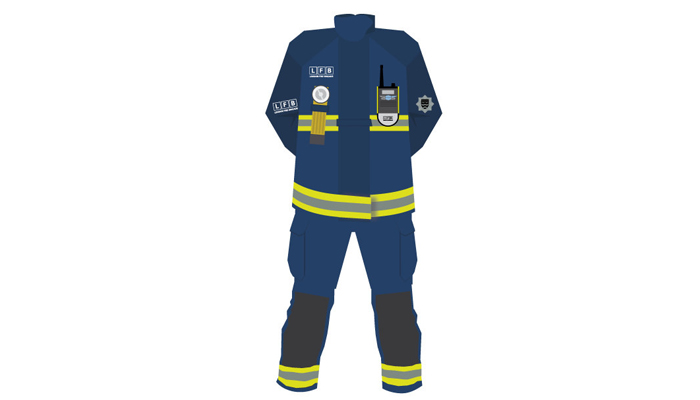
Woollen tunic and brass helmets (1866)
In 1866, Chief Officer Captain Sir Eyre Massey Shaw introduced a new uniform consisting of a blue double-breasted serge tunic and trousers.
Each firefighter carried an axe and a hose spanner, worn on their belt.
The firefighter would also wear a number on their tunic. This number represented a person's rank and the number decreased as their seniority increased.

Rubber leggings (1914 - 1974)
In 1914, rubber leggings were introduced.
The woollen trousers were easily waterlogged and became very heavy as a result.
The new rubber leggings kept legs dry, and were much lighter than wool when wet.
Iconic yellow leggings (1974 - 1989)
In 1974, the wool tunic stayed but the black rubber leggings were phased out and replaced with the iconic yellow leggings.
The bright yellow leggings helped with visibility in smoke filled rooms.

The first Nomex suit (1989 - 1999)
The first Nomex suit was introduced in 1989.
The fabric offered far greater protection from the heat and flames of the fire and was waterproof.
These were the first suits that had the same protection in the tunic and the trousers.

The Inferno (1999 - 2010)
In 1999, the Inferno was phased into service.
This maroon suit was more pliable and heat resistant than the previous suit. This allowed firefighters easier movement and the ability to stay in hot conditions for longer.
The suit has three layers: fireproof, waterproof and thermal protection.

The Ergotech Action (2010 - 2018)
Introduced in 2010, this personal protective equipment (PPE) was made of the lightest, most protective materials possible at the time.
The Ergotech Action design included many features to increase the comfort for firefighters, such as action pleats, shaped sleeves and knees.

Setting the gold standard in firefighter protection (October 2018)
The latest personal protective equipment (PPE) represents a major step forward in safety, comfort, and functionality—reflecting the evolving role of the modern firefighter.
The new gold-coloured Titan 1260 fabric, woven with PBI fibres, isn’t just striking—it’s smart. Unlike the previous dark blue gear, the lighter colour makes it easier to spot carbon contamination and debris early, helping crews identify when items need cleaning and reducing long-term exposure risks.
The selected X-Flex range is lighter and more flexible than previous kit. Features like action pleats in the coat allow for greater freedom of movement, while the tough outer shell provides top-tier thermal protection and improved breathability—reducing the risk of heat stress during intense operations.
Smart and practical features:
- Rosenbauer helmet: Equipped with a built-in torch in the crest to illuminate the firefighter’s working area.
- Gloves made from Nomex and Elk leather are machine washable to remove contaminants.
- New additional 'rescue gloves' offer greater dexterity for non-fire incidents, improving safety and control when handling smaller tools and equipment.
This new PPE is suitable for all incident types attended by the Brigade, ensuring firefighters are better protected, more comfortable, and more effective—whatever the challenge.
How have London Fire Brigade uniforms changed over time?
Take a journey through history as we explore historic firefighter tunics, from early protective gear to modern-day PPE. This fascinating look at past uniforms reveals how firefighter safety and technology have evolved over the years.
[Originally produced for International Museum Day 2021.]